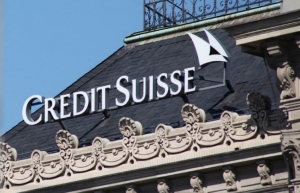No time to panic thanks to higher financial stability
However, in the current context of prolonged high interest rates, they could be the warning signals of difficult days to come for the banking system worldwide.
SVB is an unambiguous case of liquidity risk. In 2018-2021, the bank experienced remarkable growth in deposits, with $46 billion received in 2018, $94 billion in 2020, and $180 billion in 2021. This growth was due to significant surges in cash investments at US venture-backed tech and life sciences companies, most of whom banked with SVB. Most of these deposits were uninsured.
 |
| No time to panic thanks to higher financial stability, Photo: Le Toan |
Consequently, SVB’s liquidity risk increased to an unprecedented level within a short period of time. Then, in just one day, on March 9, as $42 billion of deposits – roughly equivalent to one-quarter of its customer deposits – were withdrawn from SVB, the bank fell into a state of insolvency and was forced to declare bankruptcy.
Meanwhile, when Credit Suisse's shares lost their value irretrievably and were forced into a fire sale to UBS, many people were surprised. However, this was actually a foreseeable collapse.
Unlike SVB with its traditional banking model, Credit Suisse was a complex financial institution with many products similar to those at Lehman Brothers. However, unlike Lehman Brothers, at the time of its demise, Credit Suisse had been on the list of the Global Systemically Important Banks since 2010 and been subject to enhanced regulations and supervisions by several national and global banking regulatory bodies.
Although the bank had a complex operating model, its activities were subject to the highest standards of transparency and disclosure requirements. Credit Suisse had invested $10 billion in Greensil in 2017, which did not have return of capital; also $5.5 billion had been lost when Archegos Capital Management collapsed in 2021. Significantly, in 2022, Credit Suisse booked a huge annual loss of $7.9 billion. Credit Suisse did not, after all, fail due to systemic risk but rather credit risk, i.e. from consistently bad business decisions.
The case of Credit Suisse’s collapse, from a subjective perspective, is merely a basic functioning of the market: credit risk at the bank was realised due to the bank managements’ and leadership’s inadequacy, and thus it was taken over by a healthier bank.
From the perspective of each, the cases of SVB and Credit Suisse are most likely simple and not systematic. However, in the context of macroeconomics with persistently high interest rates, the collapse of the two could be a less than positive signal for the global financial system.
In recent years, the pandemic has had consequences on economic activities, while the prolonged Ukraine conflict has caused the consumer price indexes of many countries to continuously increase with no sign of slowing down. In response to the situation, central banks around the world have continuously raised short-term interest rates to curb inflation.
As short-term interest rates rise, the cost of raising funds for financial institutions also increases. Meanwhile, rates on long-term loans are essentially fixed to specific invested assets, causing banks’ profit margin to gradually narrow. In addition, financial assets such as stocks and long-term bonds are continuously sold to rebalance portfolios towards liquid assets to take advantage of the increase in short-term rates, causing the value of long-term assets to decline, putting direct pressure on financial institutions’ balance sheets.
If this situation continues, banks and financial institutions in general will face grave difficulties going forward. Small banks, banks with inefficient business operations (such as Credit Suisse) or those with inflexible business models (such as SVB) will likely become the next victims.
The current situation is similar to the early 1980s in the US, when high inflation forced the Fed to keep interest rates high for a long period of time. A direct consequence was the savings and loan crisis, which lasted from the early 1980s through to the first half of the 1990s. During the crisis, about one-third of US credit institutions went bankrupt or ceased operations, peaking at more than 500 institutions in a single year.
The total cost to handle the crisis amounted to $160 billion, of which about $132 billion came directly from taxpayers.
Fortunately, the stability and resilience of the financial system has been raised to a substantially higher level, while the crisis-handling capacity of regulatory authorities has been strengthened with modern tools, especially since the Dodd-Frank Act of 2010. It is possible that a new crisis similar to the one in the 1980s will not occur, but banks will certainly have to be very wary of the repetitive rhymes in their historical nature.
(*)Dr. Nguyen Xuan Hai - Senior advisor and Bui My Linh Advisor Hathaway Policy Group
 | Credit Suisse to pay $495 mn in US to settle securities case Credit Suisse said Monday it would pay $495 million to settle a row over mortgage-backed securities dating back to the 2008 financial crisis. |
 | Developments for Vietnam to watch in midst of bank crisis The banking system is bracing for difficulties after the events surrounding Silicon Valley Bank, Credit Suisse, and others. Patrick Lenain, senior associate at the Council on Economic Policies, shared his views on what should Vietnam watch for during this period. |
What the stars mean:
★ Poor ★ ★ Promising ★★★ Good ★★★★ Very good ★★★★★ Exceptional
Related Contents
Latest News
More News
- Cake by VPBank posts strong gains in scale and efficiency leveraging AI focus (January 05, 2026 | 18:55)
- Banks step up listing plans in 2026 to strengthen capital and transparency (December 31, 2025 | 18:59)
- Ho Chi Minh City projects $10.5 billion remittance inflows in 2025 (December 31, 2025 | 18:58)
- New decree sharpens enforcement in securities market (December 31, 2025 | 18:53)
- Gold market reform advances as SBV receives applications for bullion production (December 30, 2025 | 12:07)
- EVN and AFD sign credit agreement for Vietnam’s first pumped storage hydropower plant (December 30, 2025 | 10:06)
- Techcombank Priority Visa Signature unlocks a higher standard of living (December 29, 2025 | 16:44)
- Tax sector wraps up 2025 and sets priorities for next year (December 25, 2025 | 14:00)
- A tipping point for digital and hybrid wealth management in Vietnam (December 23, 2025 | 13:33)
- $250 million deal targets women-owned SMEs, sustainable agriculture (December 22, 2025 | 17:40)

 Tag:
Tag:





















 Mobile Version
Mobile Version